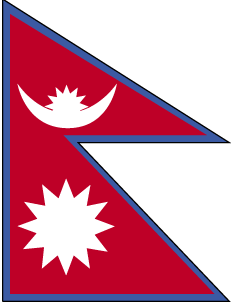Articles
- Page Path
- HOME > J Educ Eval Health Prof > Volume 9; 2012 > Article
-
Response
Self-financing students in private medical schools -
P. Ravi Shankar*

-
DOI: https://doi.org/10.3352/jeehp.2012.9.4
Published online: January 31, 2012
Department of Medical Education, KIST Medical College, Lalitpur, Nepal
- *Corresponding email: ravi.dr.shankar@gmail.com
©2012, National Health Personnel Licensing Examination Board of the Republic of Korea
This is an open-access article distributed under the terms of the Creative Commons Attribution License, which permits unrestricted use, distribution, and reproduction in any medium, provided the original work is properly cited.
- 27,319 Views
- 159 Download
-
This article is available from: http://jeehp.org/
-
CONFLICT OF INTEREST
No potential conflict of interest relevant to this article was reported.
Article information
- 1. Merl PA, Csanyi GS, Petta P, Lischka M, Marz R. The process of defining a profile of student competencies at the University of Vienna Medical School. Med Educ 2000;34:216-21. ArticlePubMed
- 2. Kristina TN, Majoor GD, van der Vleuten CP. Defining generic objectives for community-based education in undergraduate medical programmes. Med Educ 2004;38:510-21. ArticlePubMed
- 3. Kristina TN, Majoor GD, Van Der Vleuten CP. A survey validation of generic objectives for community-based education in undergraduate medical training. Educ Health (Abingdon) 2006;19:189-206. ArticlePubMed
- 4. Shankar PR, Bhandary S. FAIMER regional institutes: a positive direction in medical education. Med Teach 2010;32:938-9. Article
- 5. Shankar PR, Thapa TP. Applying the concept of ‘field’ to private medical schools in Nepal. Med Educ 2010;44:1049.ArticlePubMed
- 6. Khan JA. Migration of health personnel and its impact on health systems in developing countries. J Ayub Med Coll Abbottabad 2007;19:1-2.
- 7. Laven G, Newbury JW. Global health education for medical undergraduates. Rural Remote Health 2011;11:1705.ArticlePubMed
- 8. Murdoch-Eaton D, Green A. The contribution and challenges of electives in the development of social accountability in medical students. Med Teach 2011;33:643-8. ArticlePubMed
- 9. Dowell J, Merrylees N. Electives: isn’t it time for a change? Med Educ 2009;43:121-6. ArticlePubMed
- 10. Shankar PR. A voluntary medical humanities module at the Manipal College of Medical Sciences, Pokhara, Nepal. Fam Med 2008;40:468-70. PubMed
- 11. Shankar P. Privatization of medical education in Nepal and South Asia: an important area for future research. WebmedCentral Med Educ 2011;2:WMC002471.
References
Figure & Data
References
Citations
Citations to this article as recorded by 


 KHPLEI
KHPLEI

 PubReader
PubReader ePub Link
ePub Link Cite
Cite

